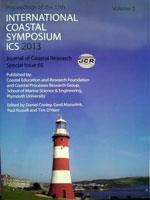Azzopardi J., Deidun A., Gianni F., Gauci A. P., Angulo Pan, B. and Cioffi M., 2013. Classification of the coastal water bodies of the Maltese Islands through the assessment of decadal ocean colour data set
Nine coastal water bodies off the Maltese Islands (Central Mediterranean) were identified within the Water Framework Directive. The degree of spatial and seasonal variability in the ocean colour chlorophyll-a values (monthly re-analysed values originating from MODIS, MERIS and SeaWiFS sensors available from the MyOcean Marine Core Service) for these water bodies in the 2003–2011 period was evaluated graphically and statistically. Weekly values from the same satellite platforms were only available for the period 2010–2011 and these were analysed separately. The nine coastal water bodies were characterized by ocean colour values consistent with an oligotrophic water body, with seasonal mean values ranging from 0.06 to 0.35 mg/m3. The same nine coastal water bodies were classified according to an arbitrary ocean colour index based on seasonal mean values calculated over the entire 2003–2011 period.
The seasonal pattern of variability within ocean colour values across the different coastal water bodies over a single year was highly homogenous, with highest values being recorded during the December–February period, and lowest values being recorded during the May–August period, with very few exceptions (solely recorded in 2010 and 2011). Although statistical analyses (PERMANOVA) showed significant inter-annual differences between seasonal ocean colour values of the different water bodies, spatial variations among the same values were statistically significant only in the spring and summer seasons, over the entire nine-year period. However, the pairwise tests revealed that most of these significantly different comparisons were registered during the 2010–2011 summer seasons. These spatial differences could either be due to an artefact (the 2010 and 2011 ocean colour data sets were derived using a different chlorophyll-a algorithm and different satellites than the 2003–2009 ones) or else they could be real (e.g. some of the coastal water bodies exhibiting higher ocean colour values are optically more complex since they host large coastal embayments, intensive aquaculture activities, treated sewage discharges and other anthropogenic activities).





